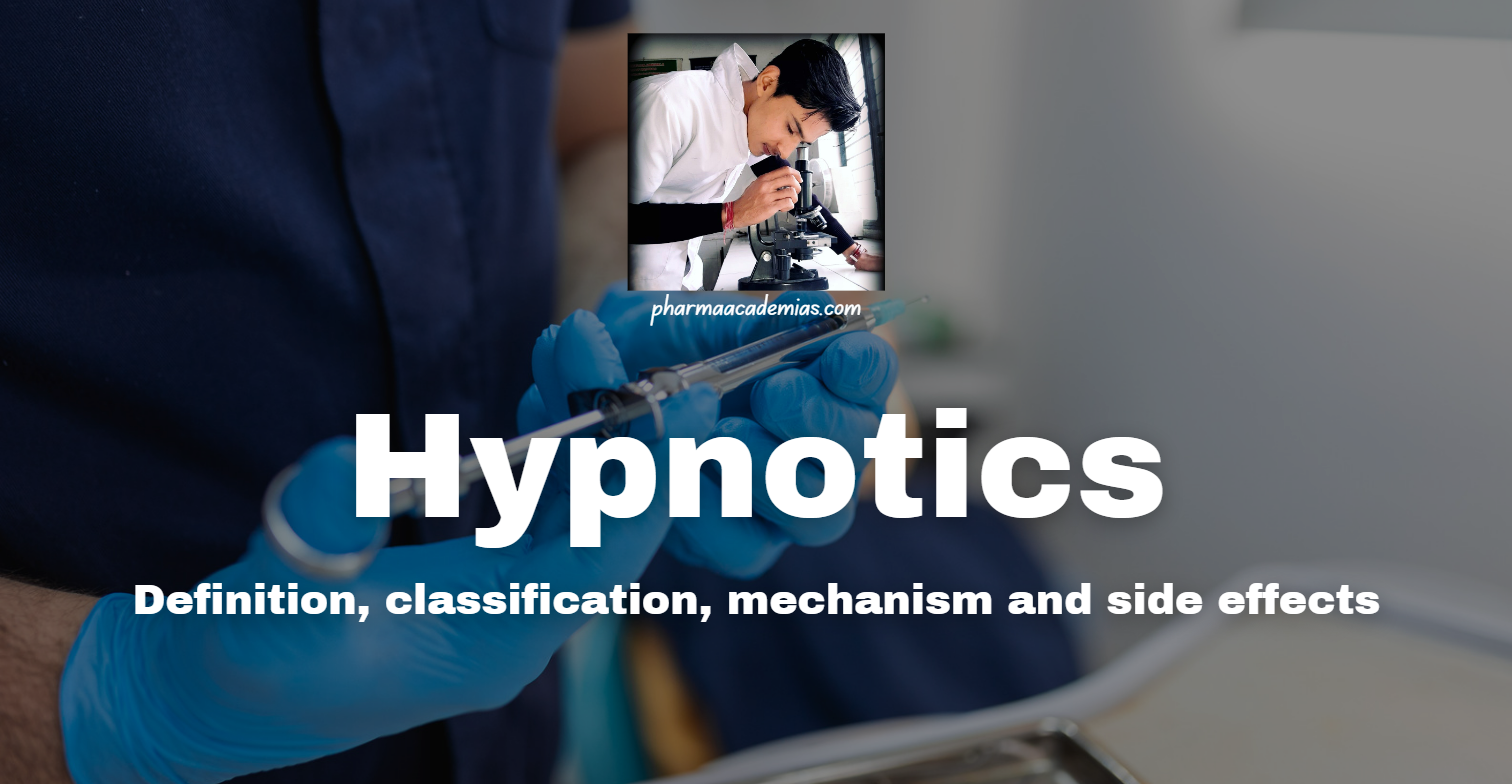Hypnotics are a class of drugs that induce sleep or promote the maintenance of sleep. They are used to treat various sleep disorders, including insomnia, sleep onset difficulty, and sleep maintenance insomnia. Hypnotics act on the central nervous system (CNS) to produce sedation, reduce arousal, and promote relaxation, facilitating the transition from wakefulness to sleep and improving sleep quality and duration.
Classification of Hypnotics
Hypnotics can be classified based on their mechanism of action, chemical structure, and pharmacological properties. Common classes of hypnotic medications include:
1. Benzodiazepine Hypnotics: Benzodiazepine hypnotics are a class of drugs that enhance the activity of gamma-aminobutyric acid (GABA), a major inhibitory neurotransmitter in the CNS. They are used for the short-term treatment of insomnia and include medications such as temazepam, triazolam, and flurazepam.
2. Non-Benzodiazepine Hypnotics (Z-Drugs): Non-benzodiazepine hypnotics, also known as Z-drugs, are a class of drugs that act on the benzodiazepine receptor subtype of the GABA-A receptor complex. They are used for the treatment of insomnia and include medications such as zolpidem, zaleplon, and eszopiclone.
3. Melatonin Receptor Agonists: Melatonin receptor agonists are a class of drugs that mimic the effects of the endogenous hormone melatonin, which regulates the sleep-wake cycle. They are used for the treatment of insomnia and include medications such as ramelteon and tasimelteon.
4. Antidepressant Hypnotics: Some antidepressant medications have sedative properties and are used off-label for the treatment of insomnia, particularly in patients with comorbid depression or anxiety disorders. Examples include trazodone, amitriptyline, and doxepin.
5. Antihistamine Hypnotics: Some antihistamine medications have sedative properties and are used for the treatment of insomnia, particularly in patients with allergies or allergic rhinitis. Examples include diphenhydramine, doxylamine, and hydroxyzine.
Mechanism of Action
The mechanism of action of hypnotic medications varies depending on the specific drug but generally involves modulation of neurotransmitter systems in the CNS to promote sleep. Key mechanisms of action include:
1. Enhancement of GABAergic Transmission: Many hypnotic medications, including benzodiazepines and non-benzodiazepine Z-drugs, enhance the inhibitory effects of GABA by binding to specific sites on the GABA-A receptor complex. This leads to increased chloride ion influx into neurons, hyperpolarization of the cell membrane, and inhibition of neuronal excitability, resulting in sedation, anxiolysis, and muscle relaxation.
2. Melatonin Receptor Agonism: Melatonin receptor agonists, such as ramelteon and tasimelteon, act on melatonin receptors in the suprachiasmatic nucleus of the hypothalamus, regulating the sleep-wake cycle. By mimicking the effects of endogenous melatonin, these drugs promote sleep onset and synchronization of circadian rhythms.
3. Histamine Receptor Antagonism: Some hypnotic medications, such as antihistamines, exert their sedative effects by blocking histamine receptors in the brain, particularly H1 receptors. Histamine plays a role in wakefulness and arousal, so blocking its effects promotes sedation and sleepiness.
4. Serotonergic and Noradrenergic Modulation: Some antidepressant medications used off-label for the treatment of insomnia, such as trazodone and amitriptyline, modulate serotonin and norepinephrine neurotransmission in the CNS. By enhancing the activity of these monoamine neurotransmitters, these drugs promote sedation and sleep.
Side Effects
Hypnotic medications can produce a range of side effects, which vary depending on the specific drug, dose, route of administration, and individual patient factors. Common side effects of hypnotics include:
1. Sedation and Drowsiness: Hypnotics commonly cause sedation and drowsiness, which can impair cognitive function, psychomotor skills, and alertness. Patients taking hypnotics should be cautioned against activities requiring mental alertness, such as driving or operating heavy machinery.
2. Residual Effects: Some hypnotic medications, particularly long-acting benzodiazepines and non-benzodiazepine Z-drugs, can cause residual sedation and impairments in psychomotor performance the following day, a phenomenon known as next-day impairment. This can increase the risk of accidents, falls, and cognitive impairment.
3. Tolerance and Dependence: Chronic use of hypnotic medications, particularly benzodiazepines and Z-drugs, can lead to tolerance, dependence, and withdrawal symptoms upon discontinuation. Tolerance refers to a diminished response to the drug over time, requiring higher doses to achieve the same effect. Dependence refers to a psychological or physical reliance on the drug to function normally. Withdrawal symptoms can include rebound insomnia, anxiety, agitation, tremors, and seizures.
4. Cognitive Impairment: Hypnotic medications can impair cognitive function and memory, leading to confusion, disorientation, and anterograde amnesia. Elderly patients are particularly susceptible to cognitive impairment from hypnotics, as age-related changes in metabolism and clearance can prolong drug effects and increase the risk of adverse events.
5. Paradoxical Reactions: In some cases, hypnotic medications can produce paradoxical reactions, such as agitation, disinhibition, aggression, or hallucinations, particularly in vulnerable populations such as children, the elderly, or patients with psychiatric disorders. Paradoxical reactions may necessitate discontinuation of the hypnotic and alternative management strategies.
6. Drug Interactions: Hypnotic medications can interact with other drugs, particularly other CNS depressants such as opioids, alcohol, and sedative-hypnotics, leading to additive sedative effects, respiratory depression, and increased risk of overdose. Clinicians should be cautious when prescribing hypnotics in patients taking other medications with CNS depressant effects and monitor for signs of drug interactions and adverse effects.
Conclusion
Hypnotics are valuable pharmacological agents used to treat sleep disorders such as insomnia, promoting sleep onset and maintenance and improving sleep quality and duration. They act on neurotransmitter systems in the CNS to induce sedation, reduce arousal, and promote relaxation, facilitating the transition from wakefulness to sleep. However, hypnotics carry risks of side effects, including sedation, residual effects, tolerance, dependence, cognitive impairment, and paradoxical reactions, which must be carefully weighed against their potential benefits. Clinicians should individualize hypnotic therapy based on patient characteristics, comorbidities, and risk factors, and monitor patients closely for adverse effects to ensure safe and effective use of these medications.

